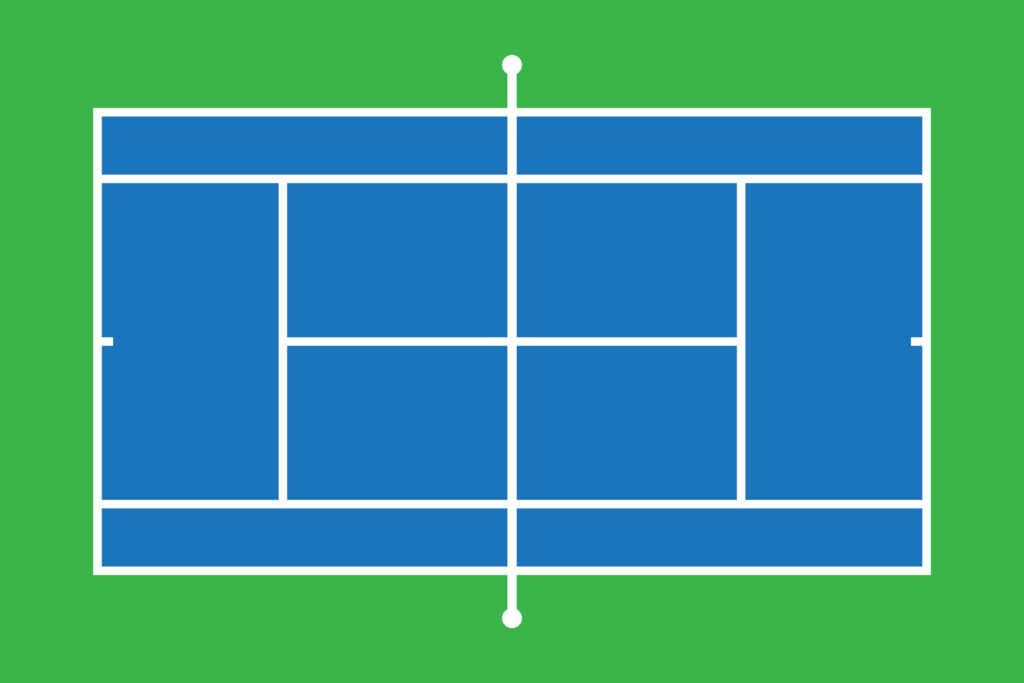
INTRODUCTION
A well-maintained tennis court helps wonderful play and its safe. Be it a regular tennis player or a casual player, keeping up with tennis court maintenance is critical for both performance and safety. This article talks about all reasons for why it is necessary to perform maintenance frequently give information on surfacing for a tennis court, measurements for a tennis court, how to locate contractors near me who do tennis courts talk about the cost of acrylic tennis court surface, options for a small backyard tennis court, and lastly, give tips on how to resurface a tennis court to keep it in top condition.
Maintenance of Tennis Court- Why It Is important
Great maintenance of tennis courts will keep them level, safe, and play well. It will also save a lot of expensive repairs in future, as minor issues tend to get fixed in regular maintenance of the courts before they become serious ones. Regular maintenance not only increases the life duration of a court but also boosts the performance of the players. The importance of routine upkeep follows:
Surface Integrity: Imperfection in even the best quality tennis court surfaces will show with time. Regular maintenance such as cleaning, repairing cracks, and resurfacing will keep intact the surface integrity so the players will play smoothly and have less chance to injury.
Traction and Safety: Good maintenance gives the right traction on courts; neglected courts become slippery or rough and cause injuries.
Consistency of Play: Bounce and speed of a ball depend on surface conditions. An expertly cared for court allows considerable reliable playing experience for both novice and advanced players alike.
Tennis Court Surfacing: The Key to Longevity
The surfaces of tennis courts highly contribute to the maintenance and playability of tennis courts. There are different materials that cover the court surfaces. These materials have different attributes, making the selection of the correct type for your application and the area the most important. Below are some of the most common kinds of tennis court surface. among many because they are tough and inexpensive.
Hard Courts (Acrylic): They provide good Traction and bounce of a ball are uniform. It will require regular patching as well as cleaning surface for smoothness while acrylic is a highly preferred resurfacing material to a tennis court because of its economy and versatility.
Grass Courts: Traditional and fast, these require a host of mundane but necessary maintenance like mowing, watering, and replacement of stained turf.
Tennis Court Dimensions
Correct tennis court measurements on a tennis court are vital in improving play. It is known in these parts that an international standard singles court is 78 feet long and 27 feet wide while the doubles court is 78 feet long and has 36 feet of width. The net must be placed at 3 feet in the center and 3.5 feet at the posts.
You can scale the perfect mini backyard down to your own reduced size, but always keep these measurements in mind to guide you towards the effective space in which to create your game. Choose a mini-court design with proportionate reduced measurements if you are going to construct a mini backyard tennis court.
Find the right tennis court contractors near to me
If you are going to install a new one or resurface, getting the right tennis court contractors near me is highly important. Professional contractors can help you in:
Design and Layout: The best location, size, and surface of the court are determined based on what is best for your needs.
Tennis Court Installation or Resurfacing: Professional contractors will provide expert advice and professional construction services on resurfacing a tennis court and making it playable again whether installing a new court or refurbishing an existing one.
Regular Maintenance: Maintenance contracts to keep your court in perfect condition all year round is what most professional contractors usually offer.
How to Resurface a Tennis Court: A Step-by-Step Guide
Resurfacing is the only solution when a tennis court wears out. Here is a brief overview on how to resurface a tennis court:
Evaluation: Check the condition of the surface. Check for cracks, discolorations, and damage to the base layer.
Cleaning: Clean the court updating it of all the debris, the dirt, and the weeds that can impact the surface.
Repair: Small cracks and damaged areas are filled and repaired with the appropriate materials.
Overlaying: The new acrylic paint or other surface material has applied as a new layer. This brings back the restorative appearance and functionality of the court.
Settling and Managing: Allow a proper manufacturer drying time for the new surface to avoid damage.
Marking Lines: When that surface has dried, the lines of the court are then required to be remarked as per regular tennis court specifications.
Surfaces can last many years for your court, but it is always advisable to hire professionals since they can do it properly.
Conclusion
Looking after your tennis court is not just a mundane chore but an investment for your court’s future in terms of longevity and quality. Whether you installed a completely new acrylic surface on the tennis court or aligned the maintenance needs of a tiny home tennis court, understanding the importance surfacing, clipping, and expert quality care will add to great performance. Keep it resurfaced regularly and on time, and maintain your court in excellent condition, allowing you to start playing for many more years.